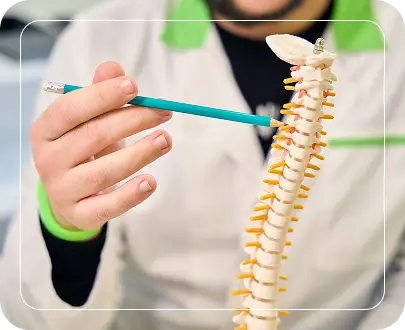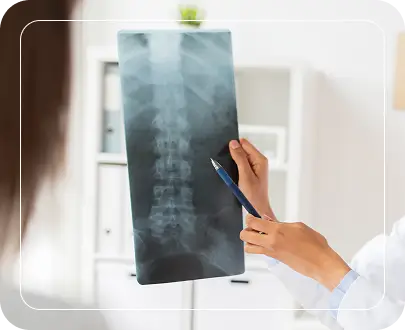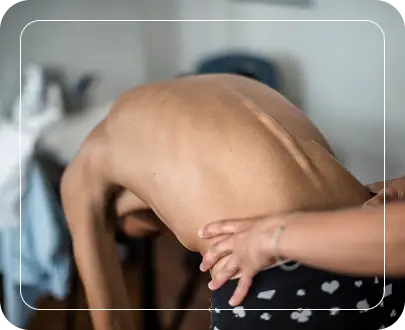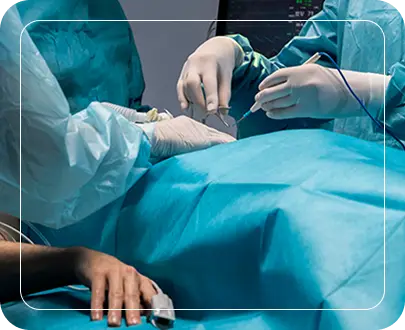Spine Lumbar Scoliosis Treatment in Kolkata
Overview

Types of Spine Lumbar Scoliosis
-
Idiopathic scoliosis
It is the most common type that appears during adolescence with no apparent cause.
-
Congenital scoliosis
A rare condition that presents from birth due to abnormal vertebral formation during fetal development.
-
Neuromuscular scoliosis
Related to muscle or nerve disorders such as cerebral palsy or muscular dystrophy, leading to weak spinal support.
-
Degenerative scoliosis
Also called adult-onset scoliosis develops due to age-related spinal wear, leading to pain and mobility issues.
-
Nonstructural scoliosis
Muscle spasms, leg length differences, or other reversible factors cause a temporary but postural curvature.

Signs that you need a Spine Lumbar Scoliosis

Uneven shoulders or hips

Uneven shoulders or hips

Visible spinal curvature

Visible spinal curvature

A prominent rib hump

A prominent rib hump

One leg appears shorter than the other

One leg appears shorter than the other

Less vertical height due to disc desiccation

Less vertical height due to disc desiccation

Back/neck pain or stiffness that worsens with activity

Back/neck pain or stiffness that worsens with activity

Nerve-related symptoms like numbness or weakness in the legs

Nerve-related symptoms like numbness or weakness in the legs

Difficulty standing straight

Difficulty standing straight

Visible spine curve when bending forward

Visible spine curve when bending forward

Changes in walking pattern

Changes in walking pattern

Breathing difficulties in severe cases

Breathing difficulties in severe cases

Fatigue & headache

Fatigue & headache

Low mobility

Low mobility
Book an appointment today
Causes & Risk Factors of Spine Lumbar Scoliosis
- Family history of scoliosis
- Age-related spinal degeneration
- Genetic conditions (e.g., Marfan, Ehlers-Danlos)
- Neuromuscular disorders (e.g., cerebral palsy)
- Inborn spine deformities
- Poor posture and prolonged sitting
- Previous spine surgery or trauma
- Spinal infections or tumours

Diagnosis of Spine Lumbar Scoliosis

Physical examination

Physical examination

Assessment of posture and shoulder symmetry

Assessment of posture and shoulder symmetry

Scoliosis X-rays

Scoliosis X-rays

CT scans

CT scans

MRI Scans

MRI Scans

Neurological assessment

Neurological assessment

Adam’s Forward Bend Test (if necessary)

Types of Scoliosis surgery
Dr. Rohit Mishra specialises in spine lumbar scoliosis surgery in kolkata along with:
- Scoliosis brace treatment
- Spinal fusion surgery
- Spinal fusion
- Vertebral body tethering
- Thoracoplasty
- Expandable rod
- Magnetic control growing rod (Magec rod)
- Medications

